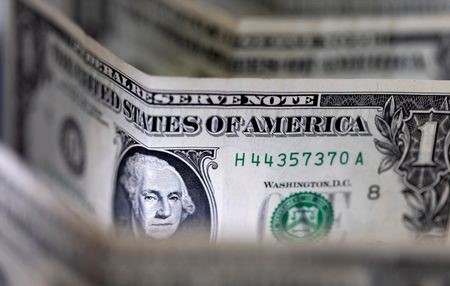




Policy Rate Updates: Double cut finale
 DOWNLOAD
DOWNLOAD

Monthly Economic Update: One for the road
 DOWNLOAD
DOWNLOAD

Inflation Update: Still low, still slow
 DOWNLOAD
DOWNLOAD


Dollar hobbled by dovish Powell, debt ceiling setback

TOKYO, May 22 (Reuters) – The dollar extended its decline versus the yen and euro on Monday, following a surprise breakdown in US debt ceiling negotiations and after Federal Reserve Chair Jerome Powell indicated a preference to slow rate hikes.
The greenback slipped 0.15% to 137.725 yen to start the week, having snapped a six-day winning streak on Friday, pulling back from a six-month peak.
The euro added 0.14% to USD 1.08205, continuing Friday’s bounce from a seven-week low.
Investors now await a key meeting between US President Joe Biden and House Republican Speaker Kevin McCarthy to discuss the debt ceiling on Monday.
Negotiations between the two sides broke off suddenly on Friday with Republican negotiators walking out of the meeting. Although talks eventually resumed, neither side cited any progress, knocking the dollar lower.
Many currency analysts say brinkmanship is to be expected heading toward the ostensible “X-date” in early June when the Treasury is likely to run out of money.
“Have we not seen this movie before?” National Australia Bank strategist Rodrigo Catril said in a client note, while Westpac strategist Sean Callow called it a “hiccup.”
“The broad outlines of a deal are still in sight,” said Callow.
Instead, the dollar is more likely to be driven by the Fed outlook, and “Powell’s preference for a pause in June should outweigh any hawkish notes from regional Fed presidents, leaving DXY as a sell on rallies,” Callow added, referring to the US dollar index.
Powell told a central bank conference in Washington on Friday that tighter credit conditions mean “our policy rate may not need to rise as much as it would have otherwise to achieve our goals,” although he reiterated that decisions would be made “meeting by meeting.”
Money market traders have pared back bets for a hike on June 14 to just 12%.
The dollar index, which measures the US currency against six major peers, was little changed at 103.07, hovering well back from the high of 103.63 last week, a level last seen on March 20.
Westpac’s Callow projects the index could drop toward 101 in coming days or weeks, “especially given ongoing ECB resolve on inflation.”
European Central Bank President Christine Lagarde said on Friday officials need to “buckle up” for “sustainably high interest rates” in order to achieve its price target.
Elsewhere, sterling gained 0.14% to USD 1.2464, continuing its recovery from last week’s three-week low.
The Aussie was flat at USD 0.6652.
Its New Zealand peer advanced 0.16% to USD 0.62855, with traders ramping up bets to 1-in-3 for a half-point hike by the Reserve Bank on Wednesday.
The Chinese yuan weakened to 7.0359 per dollar in offshore trading, creeping back toward Friday’s six-month low of 7.0750.
The currency has been under pressure on growing signs the country’s post-COVID recovery may already be petering out, but got some respite on Friday after the People’s Bank of China pledged to curb large exchange rate fluctuations.
“Despite these warnings, the PBOC may favor short-term CNY underperformance … to help provide some stimulus,” TD Securities strategist Mitul Kotecha wrote in a note.
“Overall, while markets may now be a little more wary of pushing the CNY lower, we think the CNY will largely track the USD in the short term.”
(Reporting by Kevin Buckland. Editing by Sam Holmes and Shri Navaratnam)
This article originally appeared on reuters.com





 By Reuters
By Reuters